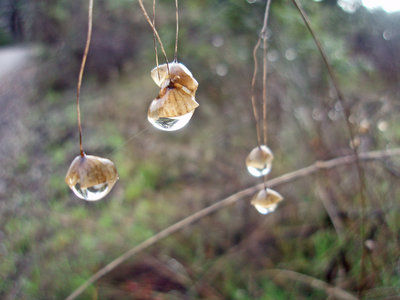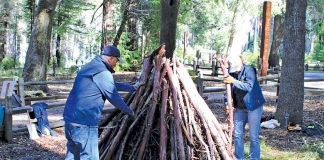We know that water is a precious and vital resource. Even our bodies are about 60 percent water, and the brain is 70 percent. Less than 1 percent of the water on the Earth, however, is suitable for human consumption. With the population increasing and the water supply staying the same, water conservation indoors and out is important. A well-planned landscape makes water conservation outside the home even easier. Since May is Water Awareness Month, here are some tips to consider.
Start simple
Rock, stone and permeable paths and driveways add visual interest to the landscape and don’t require irrigation. Improving your property’s soil quality will also save water, regardless of the plants grown there. Organic materials added to the soil help establish a strong root system for plants. Nutrients in the soil allow the plants to become stronger, too. And adding a layer of mulch increases the plants’ efficiency by retaining moisture and keeping soil temperature stable.
Choose with care
Select the right plants for your location. California natives or plants from similar climates in the world require less maintenance and irrigation and usually need less tending, fertilizer and pruning, as well.
Your choice of groundcover can make a big difference, too, in how much water the landscape saves. Keeping grassy areas to a minimum generally reduces the amount of water needed to keep the landscape looking green and fire safe.
Water wisely
Your method of irrigation can help conserve water. Hand-watering where possible, especially new plantings, directs the water exactly where it needs to go, and you can shut off the hose as soon as the plants have enough water. A soaker hose is another efficient option that reduces evaporation during the watering process.
An automatic irrigation system with a rain sensor, weather-based controller or soil-moisture sensors is the newest way to save water.
Look for incentives
Both San Lorenzo Valley Water District (www.slvwd.com) and Scotts Valley Water District (www.svwd.org) offer many tips and incentives to conserve water. Amanda Robinson, a water conservation intern with Scotts Valley, explained that the district is very interested in getting out the word about using less water-intensive plants. Lists on the website identify many drought-tolerant plants and water-smart grasses. Replacing lawns and old pop-up sprinkler systems also saves water.
Scotts Valley’s rebate programs include several landscaping credits for drip irrigation conversion, weather-based controllers or changing an existing lawn to water-wise grasses or synthetic grass. Both districts have guidelines and procedures to apply for the rebates on their websites.
Scotts Valley gave 13 lawn replacement rebates in 2010 and five so far this year. It also gave five weather-based irrigation controller credits and three cistern credits for catching and storing rainwater last year, plus one low-volume irrigation system conversion credit. Visit the website for your water supplier to learn more. Don’t miss out on this important information and possible rebate.
Get hands-on help
There is even a water-wise workshop from 10 a.m. to 1 p.m. this Saturday, May 14, at the Scotts Valley Water District Office, 2 Civic Center Drive. The workshop is sponsored by the Ecological Landscaping Association and presented by Joy Albright-Souza.
Attendees can take dimensions of their yard or project area and take home a class-created landscape plan. The cost is $45 and can be paid by check at the door. For information: 419-5994.
Let’s make every month Water Awareness Month.
Jan Nelson, a landscape designer and California certified nursery professional at Plant Works in Ben Lomond, will answer questions about gardening in the Santa Cruz Mountains. E-mail her at ja******@*ol.com, or visit www.jannelsonlandscapedesign.com to view previous columns and pictures.











